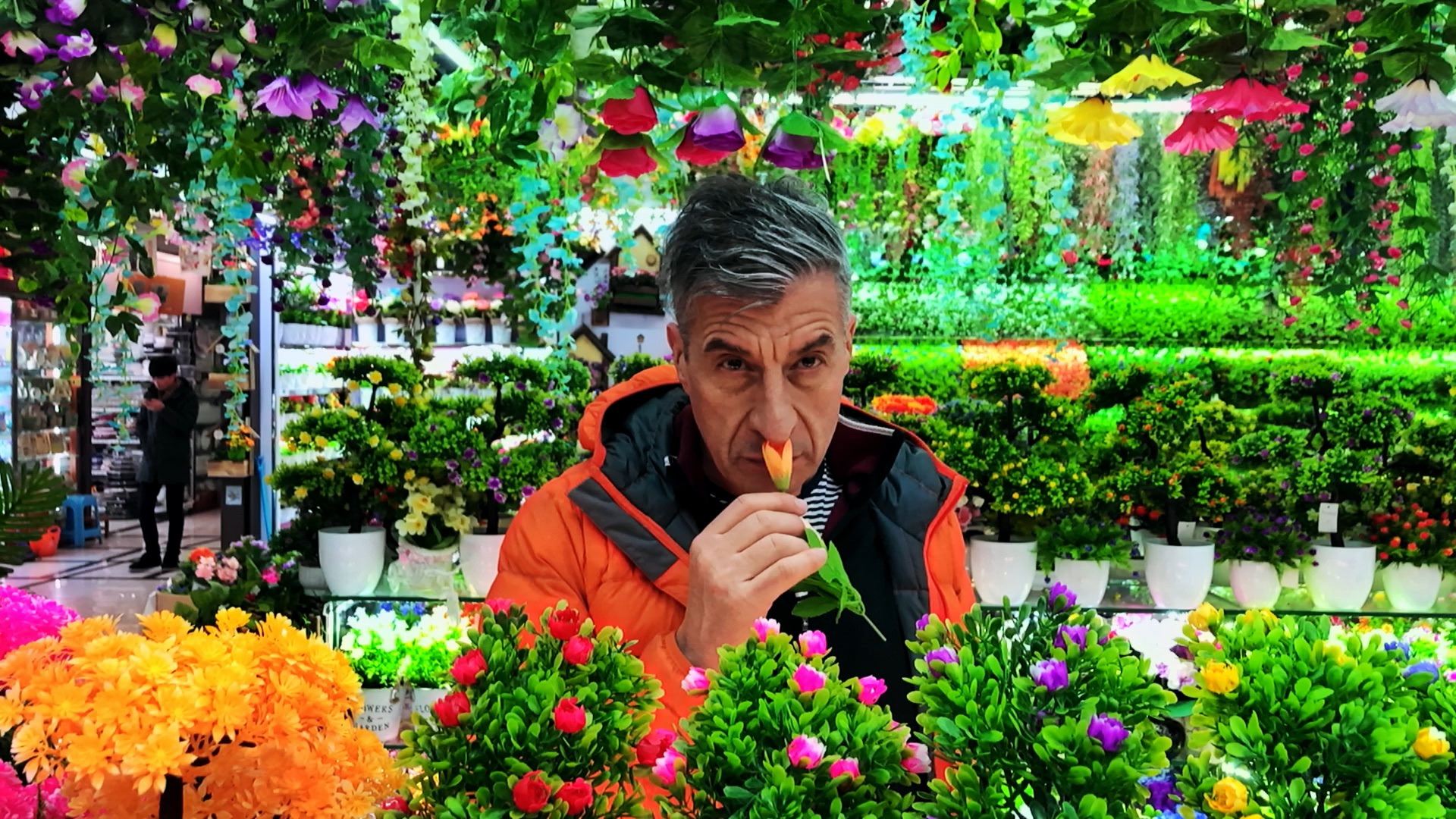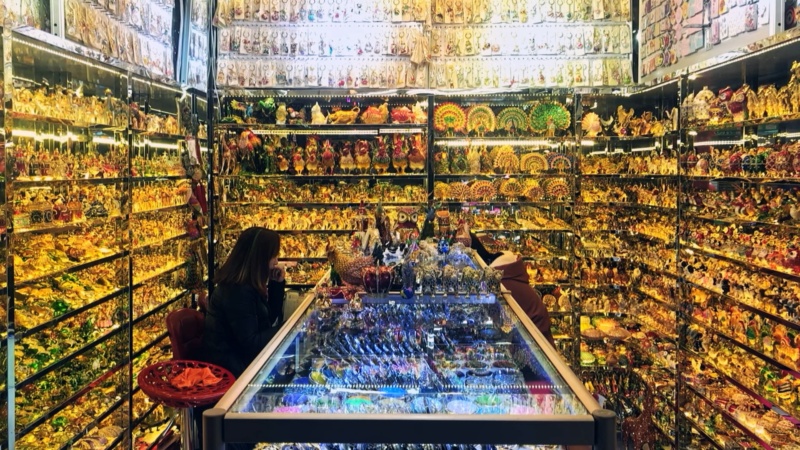
In 1970, influential German philosopher Theodor Adorno claimed that “great artists since Baudelaire were in conspiracy with fashion.” He wasn’t all wrong. Today, crossover collaborations between art and fashion have achieved unprecedented attention.
Bizarrely borrowing the title of Marina Abramović’s blockbuster MoMA exhibition from 2010, “The Artist Is Present” is a collaborative exhibition between Gucci’s creative director Alessandro Michele and art world’s favorite prankster Maurizio Cattelan—here, acting as curator. In a cryptic statement the show is described as “an act of appropriation,” focusing on artistic projects that envisage the copy as a paradigm for global culture.
These preoccupations feel rather timely in the age of social media, where plagiarism has become unmissable—and yet uncontrollable. China, the world capital of counterfeit, provides a somewhat appropriate context for the exhibition, which will be hosted at the YUZ Museum in Shanghai.

“The Artist Is Present” looks at the dynamics between creation, appropriation, copy and authorship. You’ve previously said that “originality doesn’t exist in itself”; but rather it has something to do with the “capacity to add.” What prompted this project now, and in this collaborative form? When in 1988 they discovered that the Shroud of Turin was a 13th-century artifact and not the impression of Christ’s body on his shroud, no one thought of stopping the veneration of the artifact. I had always wondered how that was possible until I realized that the difference between copy and original is only a question of faith. One could say that it is this fascination that led Alessandro [Michele] and I to meet: we both believe in the originality of the copy.
What was it like working with Alessandro Michele and how did the conversation come about? Alessandro, probably inspired by his personal Renaissance iconography world, decided to take up the role of patron (quite a reckless one, to be honest!) and commission me to curate a show, challenging me to find a way to raise the level of discussion around the dichotomy between copy and original. I’ve been gifted a total freedom of choice with regard to the artists and how to show them, and this absolute liberty has no price. I guess I’m in the best position after Pope Sixtus IV’s commissioned Michelangelo the Sistine Chapel. Maybe even better. Anything you can tell us about the project’s title, which is borrowed from the high-profile, seemingly unrelated MoMA retrospective of Marina Abramović? Marina Abramović’s “The Artist Is Present” has been the mother of every contemporary art show: it’s the one that everyone knows. To copy the title and take inspiration from the advertising campaign seemed the most natural thing to do for a show that claims to be the reign of copies in all its possible forms. Marina and her practice have nothing to do with the exhibition itself, but I wasinterested in testing the power of an image and a title presented in a completely different context, as it was for the ”Shit and Die” exhibition in Turin that I curated with Marta Papini and Myriam Ben Salah in 2014. In this way, the project overcomes the physical boundaries of the exhibition and becomes part of the media discussion.
Are we anywhere close to the resolution of dream and reality, as professed by André Breton in his “First Surrealist Manifesto” almost a century ago? In a way, yes. We are surrounded by something that’s more similar to a cloud, but it’s sticky, pervasive and perverse as a blob: Misinformation and post-truth news are the daily nightmares that have substituted reality, and we can’t help but share them. Our subconscious, our fears and our passions became the material for unscrupulous people to make money every time we tap on our phone. I’m not sure whether Breton meant this, but this is definitely where we are now, much further beyond than The Twilight Zone.

In China, the concept of copy differs widely from the Western perspective. Copies are often considered of equal value to the original. How has working there informed your position? I’ve recently learned that Eastern culture, not just the Chinese, has been based for ages on the concept of reincarnation. Because time is circular, the sense of progress, of an old time versus a new one that is typical of a culture that considers time as a straight line, is not even considered. The most classical example is that of Buddhist temples, which are demolished and rebuilt continuously: Where we see a new building, Asian culture sees the reincarnation of the previous one. Reincarnation is the first prerequisite for understanding the copy as the original equation that underlies the whole exhibition.
Plagiarism claims are frequent in all creative fields, which social media has made nearly impossible to go unreported. Do you think the establishment and those in a position of power have a responsibility to credit and engage with lesser-known talents?Of course, when there’s the possibility, I’m a fan of the “share responsibly, and credit everyone” motto. Copying is the gesture we do most often during the day. Every time you share content online, you’re potentially plagiarizing someone. The battles over copyright have been lost and overcome by the sharing way of life. You can’t go back from that, so the best option we have is to accept it and deal with it. Ideas are like raindrops: They fall on everyone in the same way at the same time, but only some people feel the rain. Others just get wet.
Nearly a decade ago, soon after Obama stepped into office, you speculated, “Sooner or later, something dramatic is going to happen.” Have we reached that moment yet? It may have happened, it may not have happened, but it could have happened. The tragedy is that no one was there to see it, they were all too busy reposting it.
Craving more culture? Sign up to receive the Cultured newsletter, a biweekly guide to what’s new and what’s next in art, architecture, design and more.










 in your life?
in your life?

